Back to blog
How to Create an Author Website in 2025 [Step-by-Step]
Discover how to create a website for your writing that builds your audience, showcases your books, and grows your author brand with ease.

Jul 12 2025
![How to Create an Author Website in 2025 [Step-by-Step]](https://codesi.ai/admin/static/Cover_bea62596ec.webp)
Many authors still believe they don’t need a website. But in 2025, that’s one of the biggest mistakes you can make. With social media and Amazon handling so much of book discovery process, a website can seem unnecessary.
Here's the truth: every successful author needs a digital space they fully control. An author website is your home base, your newsletter hub, and your launchpad for new releases.
This guide will walk you through how to create an author website that supports your career, builds your audience, and grows with you.
What is an Author Website and Why Does It Matter
An author website is your personal corner of the internet. In this centralized place, readers can explore your books, learn about your journey, join your mailing list, and stay connected between releases.
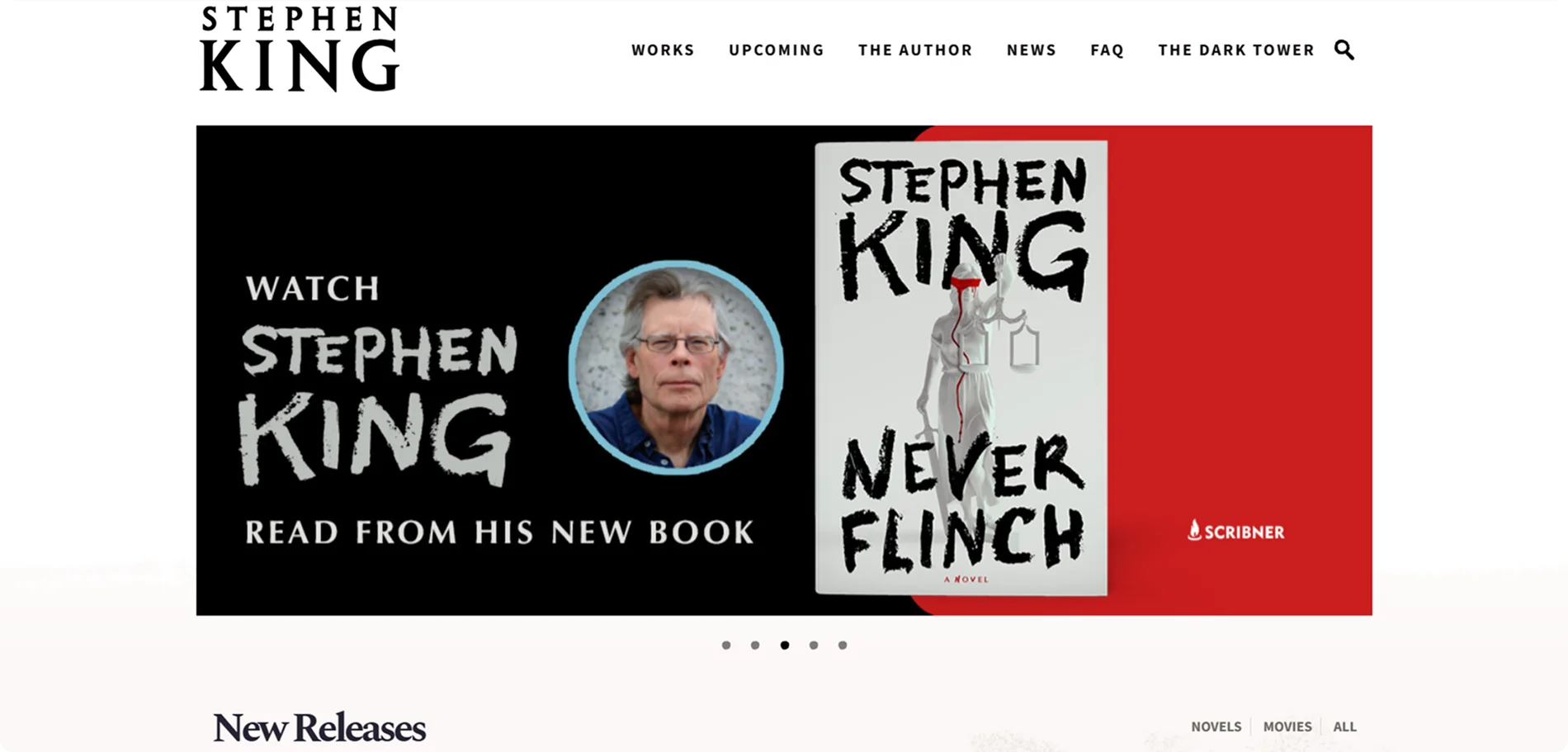
In 2024, 87.5% of authors reported having their own website.
However, only 29.6% actively use it for direct sales, though 33.2% plan to start. That means many authors still aren't tapping into the full potential of their sites, especially when it comes to direct reader relationships and sales.
And readers do visit: a study found that users spend an average of 1 minute and 44 seconds per session on author websites. That's just enough time to browse a book catalog, read a short section, or sign up for a newsletter, if your site is clear and engaging.
When used correctly, your personal website becomes more than a "nice to have." It becomes your most reliable tool for long-term growth, one that works even when social platforms go quiet.
12 Steps to Build an Author Website That Works in 2025
Here's everything you need to create a site that showcases your books and grows your audience:
1. Define Your Author Brand and Goals
Before designing anything, clarify your author identity and goals.
Are you a suspense author with a noir, cinematic edge, someone whose stories leave readers breathless? Or perhaps you write cozy romances or children's books filled with whimsy and warmth?
Your author persona, that unique blend of genre, tone, themes, and values should guide every visual and verbal element of your website.
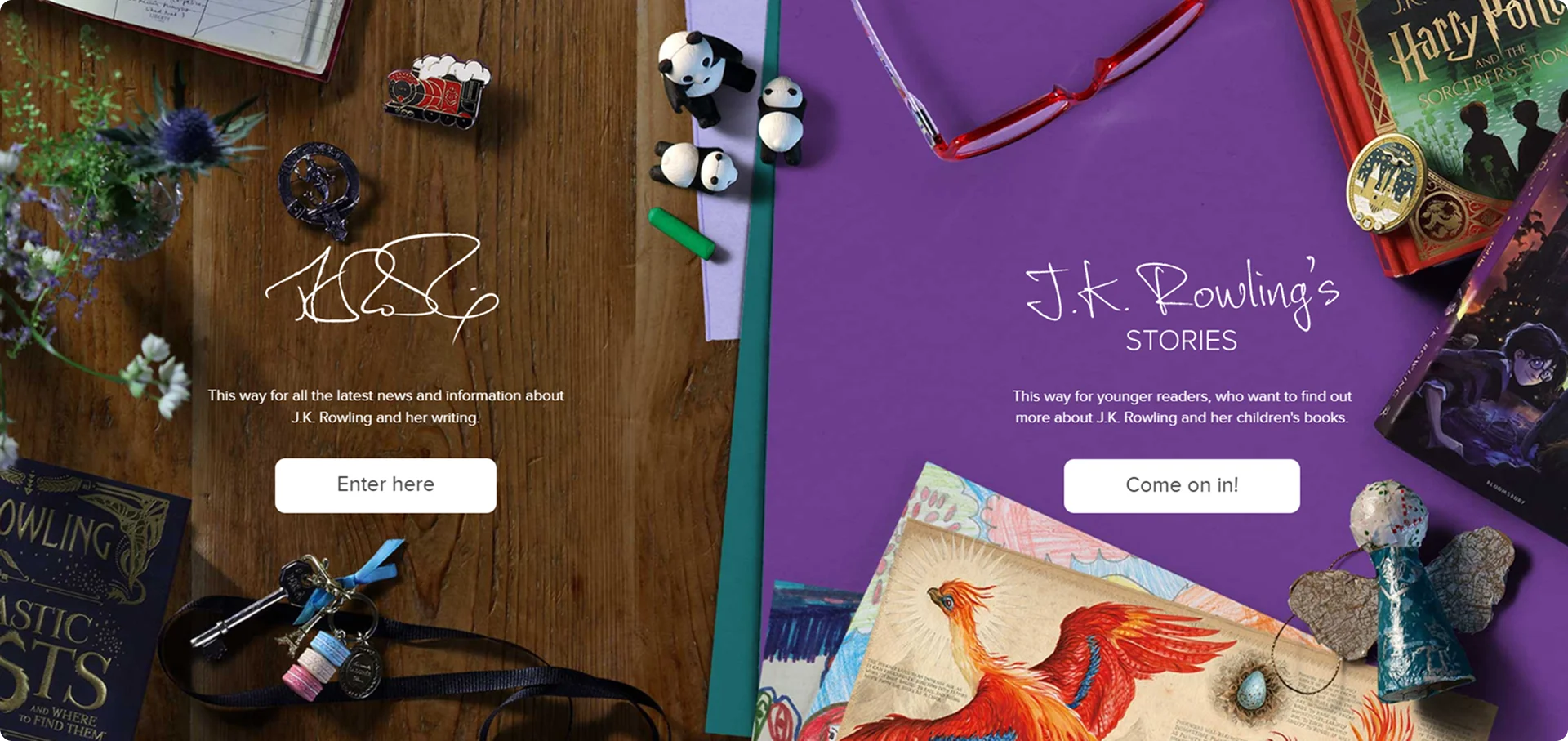
Next, define what your goals look like. Are you trying to build an email list of loyal fans? Promote a new release? Sell signed paperbacks? Or you want to land more interviews and media features. Get specific.
For example:
- If your primary goal is to grow your email list, feature signup forms in key locations, and offer a lead magnet, such as a free novella or exclusive bonus content.
- If you want to sell books(or eBooks), prioritize a clean shop layout with simple navigation and direct buying options.
- If credibility is key, prominently feature reviews, testimonials, awards, or media mentions on your homepage to establish trust.
Takeaway: Your brand and goals shape your site's message, design, and structure. Start with clarity to build with purpose.
2. Choose the Right Website Builder
If you're not super tech-savvy,or just not interested in spending hours learning how to build a website from scratch – don't worry.
Many platforms today offer drag-and-drop editors, allowing you to build your site visually by moving elements around, with no technical skills required.
You'll find both traditional builders and newer, faster tools. Traditional ones offer more control but can be complex, while modern options focus on simplicity, perfect if you just want to get online and start writing.
When choosing the right platform, think about what matters most to you:
- Ease of Use – Do you want something simple and intuitive, or are you comfortable tinkering with layouts and settings?
- Creative Control – Can you make it look and feel like you: your genre, your tone, your style?
- Built-in SEO – Will the platform help your site show up in Google with things like mobile responsiveness, fast loading, and meta tags?
- Budget – Is it affordable now, and will it still make sense down the road as your career grows?
- Customer Support – If something breaks or you get stuck, is someone there to help?
Takeaway: You don't need to be a tech expert to create a solid author website. Select a builder that aligns with your comfort level and offers the flexibility to accommodate your growth.
Bonus Tip: If you're looking for something fast and easy to manage, Codesi is a great place to start.
3. Secure Your Domain and Hosting
Once you've chosen a platform, the next step is to secure your domain name and hosting (if necessary).
Your domain should ideally be your full name or pen name, e.g., JaneSmithBooks.com, without extra characters, numbers, or dashes. Keep it professional and memorable.
If you're using a self-hosted platform, you'll need to select a hosting provider. Look for one that offers fast load times, reliable uptime, and daily backups.
Many website builders now include hosting as part of their plans, so you might only need to point your domain to your site.
Additionally, ensure your site has an SSL certificate (HTTPS), which secures your visitors' data and enhances your SEO credibility.
Takeaway: Register a clean domain early and choose hosting that keeps your site fast, safe, and available.
4. Plan Your Site Structure and Core Pages
Consider the layout of your website before you start designing. A clear and intuitive site structure improves the user experience, allowing visitors to quickly find what they need.

Start with these essential pages:
- Homepage: Feature your author name, a brief intro, your latest book, and a strong call-to-action (e.g., "Join My Newsletter" or "Shop Books").
- Books/Works: Create individual pages for each book or series, featuring cover images, descriptions, praise, and links to purchase.
- About: Share your author bio, photo, and background. Readers love knowing the person behind the page.
- Contact: Include a form or email for inquiries from readers, media, or collaborators.
- Blog/News (Optional): Post updates, behind-the-scenes content, or essays. This boosts SEO and reader engagement.
You can also add sections for Events, Media Kits, or Freebies, depending on your strategy.
Takeaway: A well-organized site structure helps readers navigate easily and highlights your most important content.
5. Design for Readability and Accessibility
Readers visit your site for clarity, not fancy gimmicks.
Use fonts that are easy to read (sans-serif for body text), strong contrast between text and background, and large enough font sizes (16px+).
Stick to two or three fonts site-wide to maintain a clean look.
Break up text into short paragraphs, use subheadings and bullet points, and add plenty of white space. Always include alt text for images, use semantic headings (H1, H2, H3), and test your site on different screen sizes.
With mobile traffic continuing to rise, responsive design is essential. Ensure buttons are tap-friendly and your layout adjusts naturally to different screen sizes.
Takeaway: A clear and accessible design keeps readers engaged, helping your content reach a broader audience.
6. Add Engaging Content and Media
Bill Gates famously said, "Content is king." And as an author, you already know that. Your words are what capture attention, build connection, and drive everything forward.
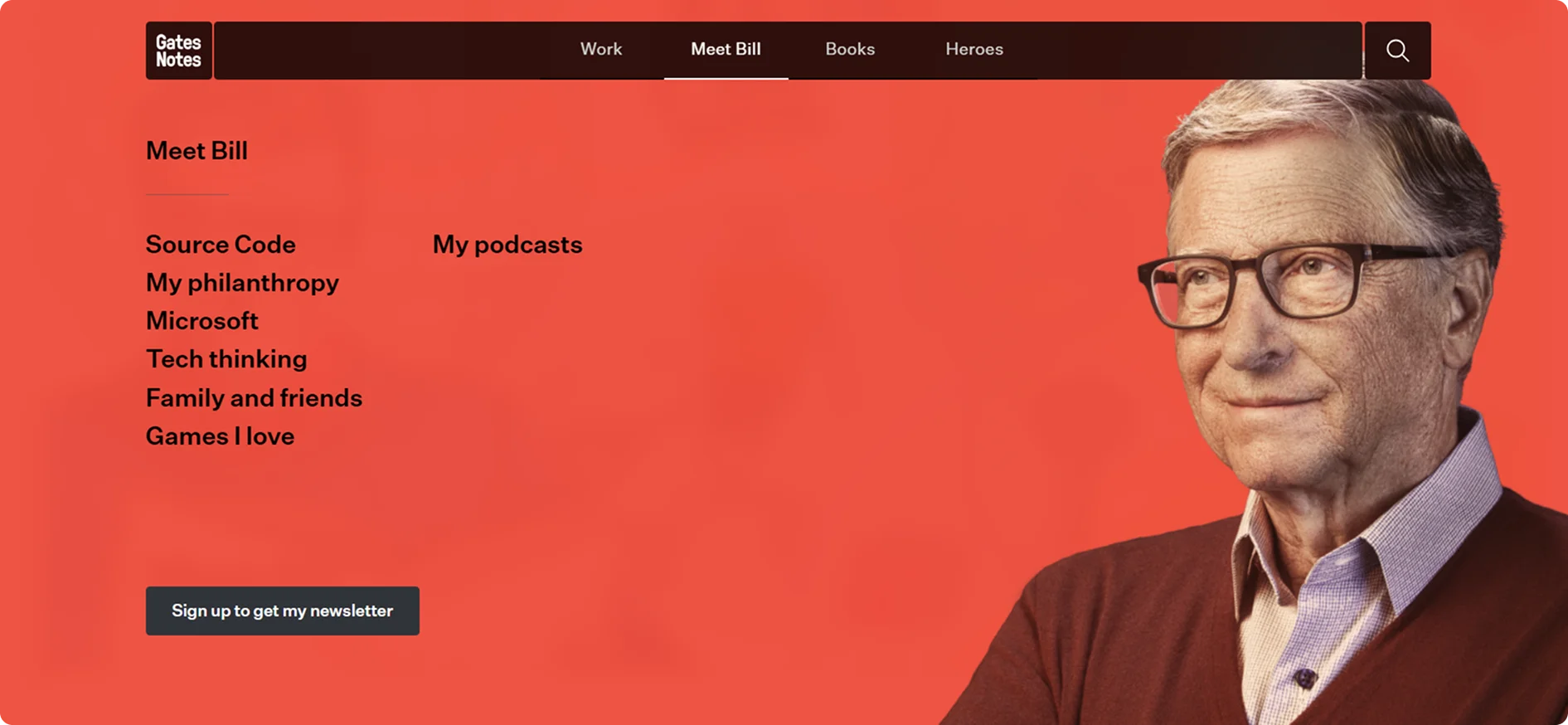
The same applies to your website. It's not enough to simply show up online – you want visitors to feel something the moment they land on your site.
At minimum, include:
- A high-quality cover image(optimized for web)
- A punchy, well-written description that sells the vibe of the book
- Positive quotes from reviews or awards
- Easy-to-spot buy buttons linking to your preferred retailers
- Bonus: offer a free sample chapter (PDF or EPUB) to hook browsers
But don't stop there. If you want visitors to stick around,and keep coming back, consider adding:
- Free downloads or reader magnets in exchange for email sign-ups
- Behind-the-scenes notes about your writing process or character development
- Short audio samples or video trailers to bring your book to life
- A simple press kit (author bio, photos, logos) for bloggers and media
Just remember: every piece of content should serve a purpose. It's not about filling space, it's about improving the reader's experience and providing them with more reasons to care.
Takeaway: Great content is what turns a curious visitor into a true fan.
7. Grow Your Email List with Lead Magnets
Your email list is one of the most powerful tools you have as an author. Unlike social media, email drives real book sales and builds lasting relationships with readers.
Make sure your site includes a clear, eye-catching signup form, ideally on every page (like in the footer or sidebar). Avoid generic lines like "Sign up for my newsletter." Instead, offer a lead magnet: something free and specific, like a bonus chapter, short story, or behind-the-scenes content. A good hook might be: "Get an exclusive prequel story – only for subscribers."
And don't overlook the content of your newsletter, it's what keeps readers opening and engaging with it.
While general marketing emails typically achieve a 32% open rate, author newsletters often exceed 30–50%, with click-through rates ranging from 5% to 10%, which is well above industry norms.
That's because subscribers want to hear from you, so give them real value: updates, sneak peeks, personal notes, or exclusive extras they can't get anywhere else.
Takeaway: A strong email list is your most reliable audience, build it early with something worth signing up for.
8. Optimize for SEO and Discoverability
Want readers to find you through search? Start with a few simple steps:
On-page SEO:
- Use clear, relevant keywords in your page titles, headings, and URLs
- Write unique meta descriptions for each page to summarize the content
- Add descriptive alt text to every image for better accessibility and search visibility
- Compress images to improve load times without sacrificing quality
Site performance:
- Enable HTTPS to ensure your site is secure and trustworthy
- Test your site on mobile devices to make sure everything looks and works smoothly
- Make sure search engines index your site so it can appear in results
Takeaway: You don't need to be an SEO expert, just a few clever tweaks can make your site far more discoverable.
9. Show Social Proof and Build Community
People trust what others say about you more than what you say about yourself, so let your work speak through the voices of others.
Add reviews, award mentions, bestseller tags, or reader testimonials to your homepage and book pages.
Don't stop at proof, build a connection. Link to places where your readers gather, whether that's your Goodreads profile, a Facebook group, or a Discord server. You can even invite interaction through Q&As, comment sections, or occasional giveaways and fan contests.
Takeaway: When visitors see that others enjoy your work, and feel like there's a real community around it, they're much more likely to stick around and become readers themselves.
10. Launch and Promote Your Site
Before going live, give your site a final polish.
Click every link, test your forms, and make sure it looks great on both desktop and mobile. Double-check your copy for typos, confirm SSL is active, and ensure your site loads quickly.
Once you're confident everything's working, it's time to spread the word:
- Send an announcement to your email list
- Share the launch across your social media platforms
- Offer a limited-time freebie or discount to encourage early visits
- Reach out to book bloggers, newsletters, or podcast hosts to feature your launch
Takeaway: A thoughtful launch sets the tone, generates buzz, builds excitement, and turns your first visitors into long-term fans.
11. Maintain and Grow Over Time
Your website isn't a one-and-done project, it should grow alongside your writing career.
Add new book releases, update your blog, and refresh your lead magnets periodically. Check your site's performance, fix any broken links, and revisit your SEO strategy to stay visible.
Ensure your site continues to reflect your brand as it evolves. A quick design refresh every so often can keep things feeling fresh and professional.
Most importantly, stay connected. Reply to reader emails, encourage reviews, and share behind-the-scenes content or writing updates to keep your audience engaged and informed.
Takeaway: Your author website is a living, breathing part of your platform, therefore nurture it, and it'll continue to work for you.
Your Story Deserves to Be Discovered – Let Codesi Build the Path
You've got the words. You've got the story. But turning that vision into a functional, professional author website? That part can feel overwhelming, especially when you'd rather be writing.
Creators who want amazing designs without complexity choose Codesi.
You might be launching your debut novel or expanding a digital hub for a growing blacklist, either way, Codesi helps you build a site that feels like you: fast, polished, and stress-free.
Here's what makes Codesi ideal for authors:
- Tailors your site to match your genre, tone, and audience
- Writes authentic-sounding copy based on your input
- Includes drag-and-drop editing that anyone can use
- Mobile-optimized and SEO-ready from the start
- Easy to update with new books, blogs, or lead magnets
- No coding, no stress, just storytelling made visible
Here's how to easily generate author’s website with Codesi - step by step:
Step 1: Sign up on Codesi (it's free).
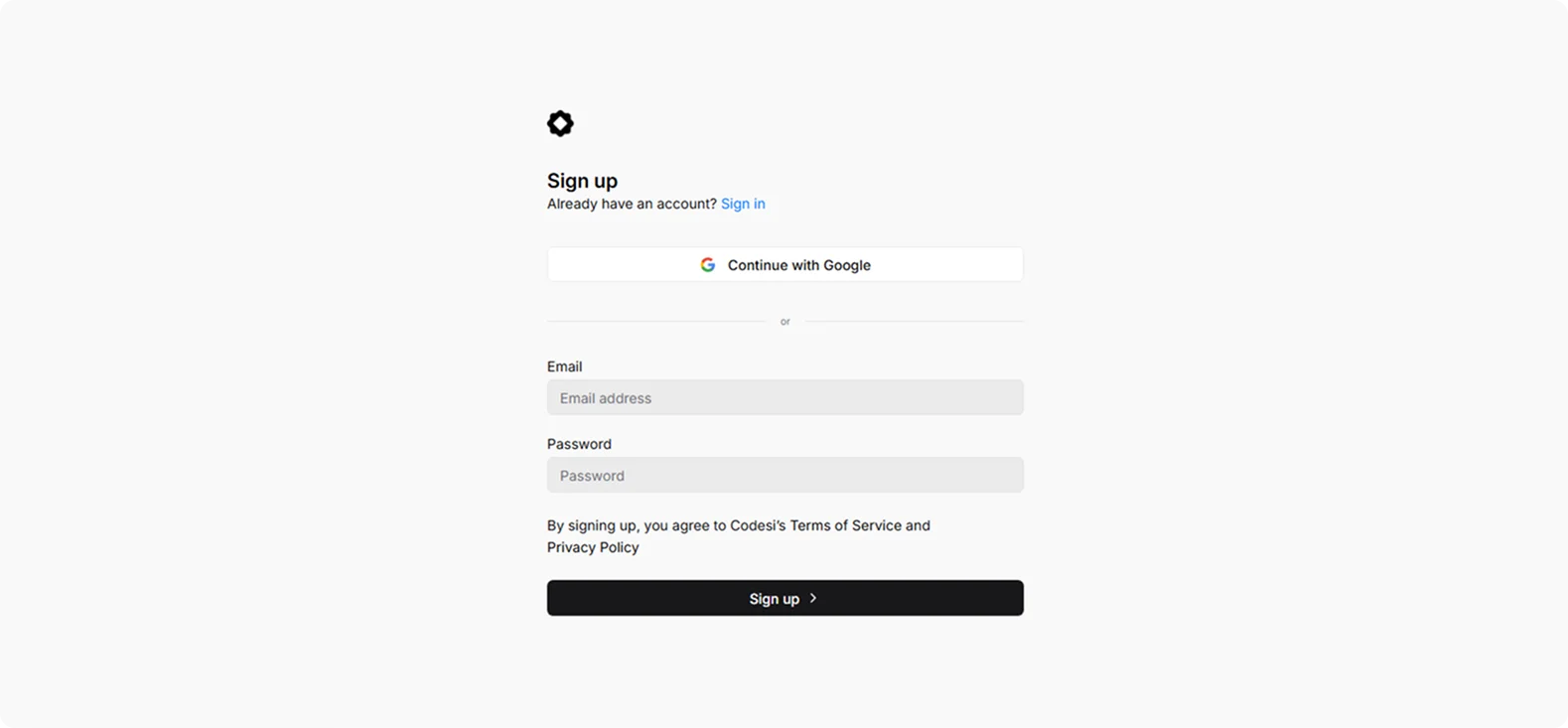
Step 2: In the Website Builder, enter your prompt. For author website creation, we used the following example:
“Design an author website for a debut romance novelist. Keep the tone warm and welcoming, with a focus on building a newsletter and offering a free short story.”
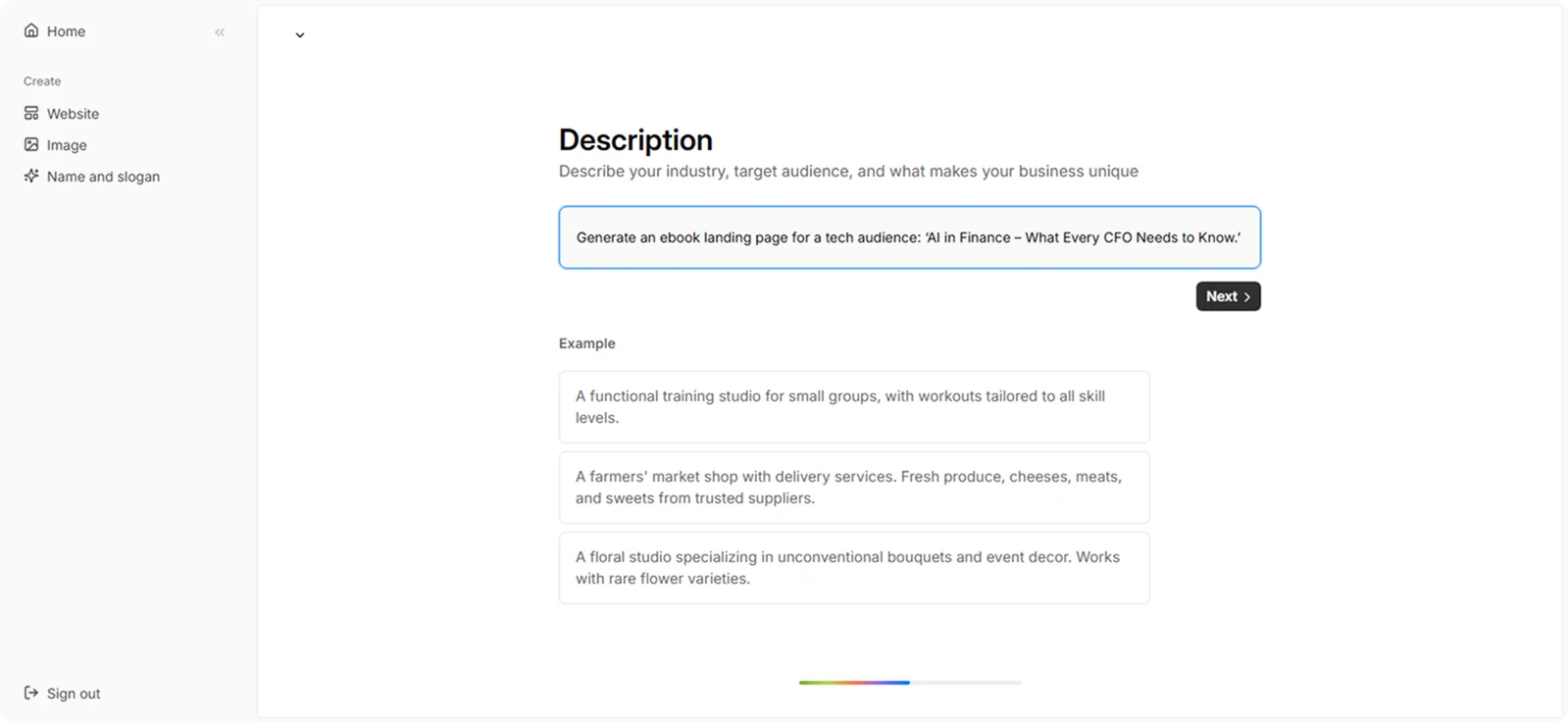
Step 3: Choose your color theme and style. For this example, we used:
“Use a soft, romantic palette with blush pinks, creamy neutrals, warm rose tones, or gentle lavender accents. The background should feel light and inviting, with elegant serif or script fonts for headings and clean sans-serif for body text. Include soft, rounded buttons and gentle hover effects to create a sense of warmth and ease.”
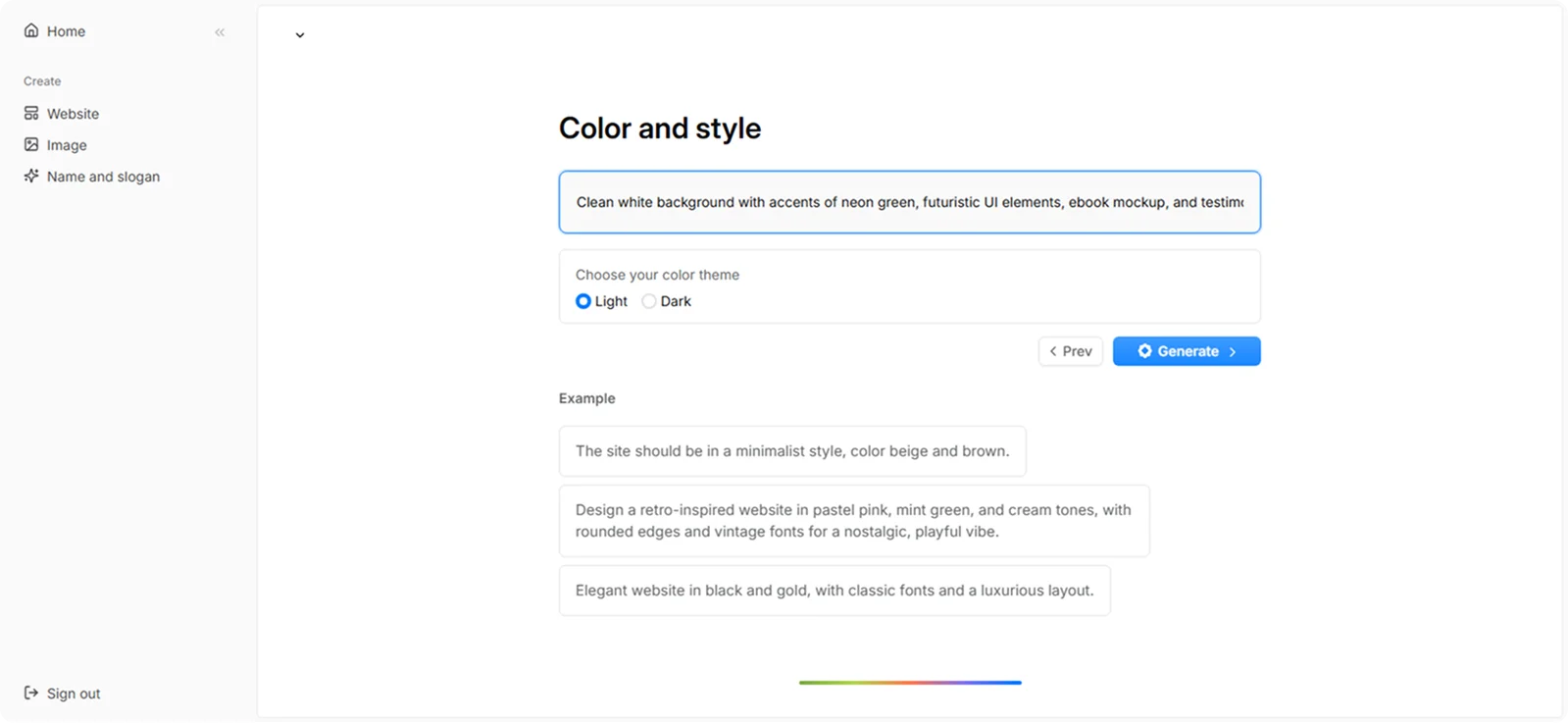
Step 4: Click "Generate" and wait a few minutes while Codesi generates your author website page.
Codesi will instantly generate a refined author website you can easily customize and optimize to fit your goals.
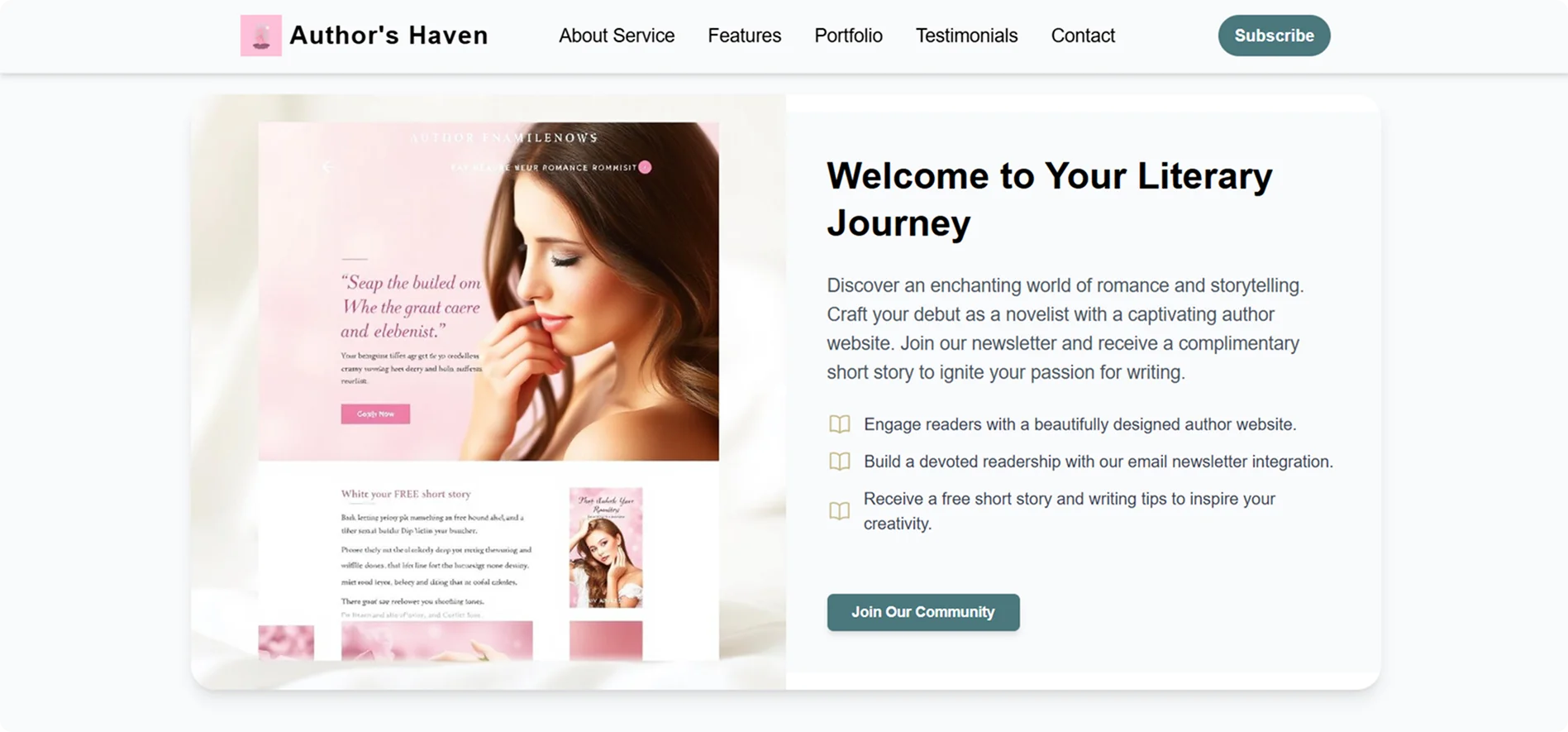
Are you ready to let your story shine?
Codesi helps you build a stunning author website in minutes and turn fans into readers.
Create your website with AI today
Codesi is a platform where you can make a website in 3 minutes.
No coding, no designers, no hassle - just AI.
